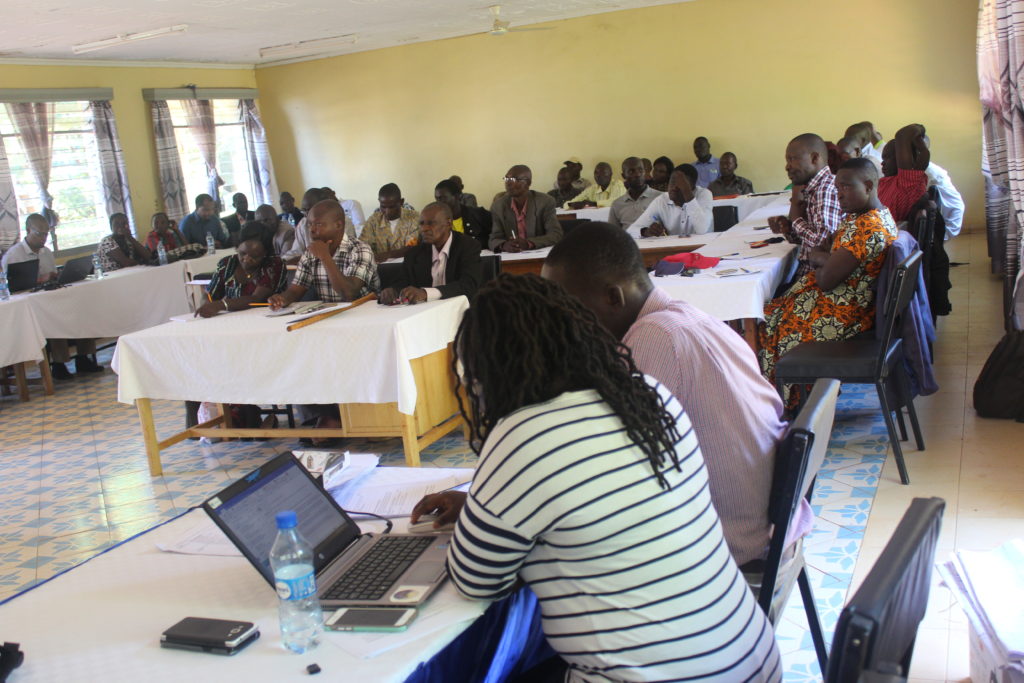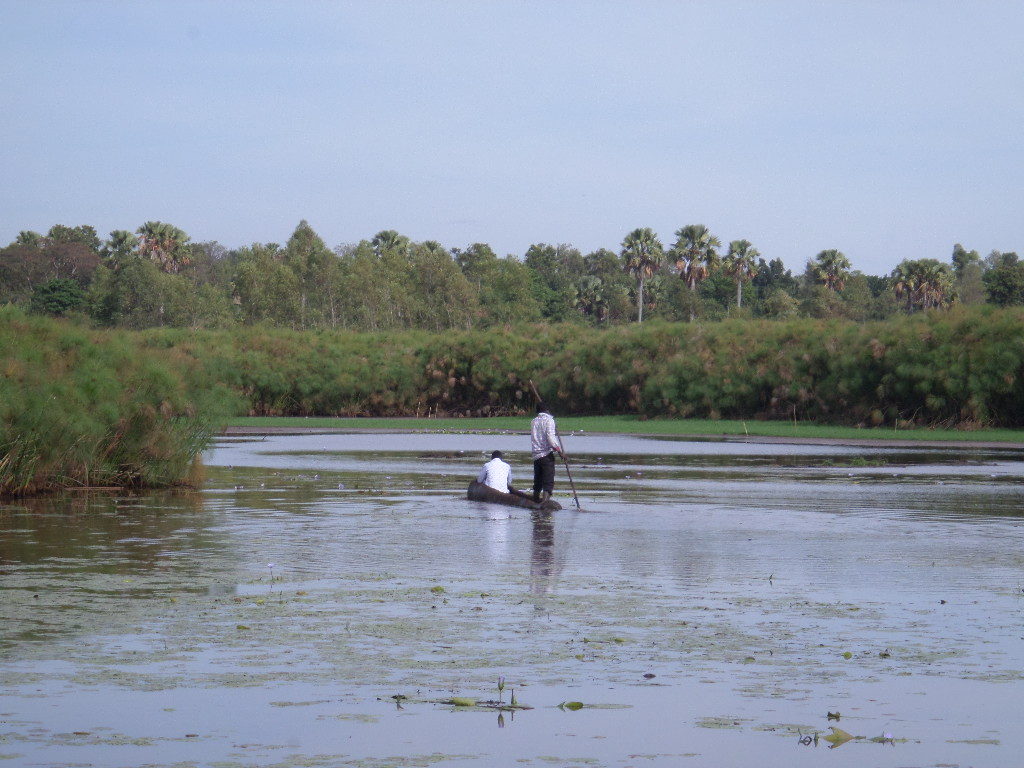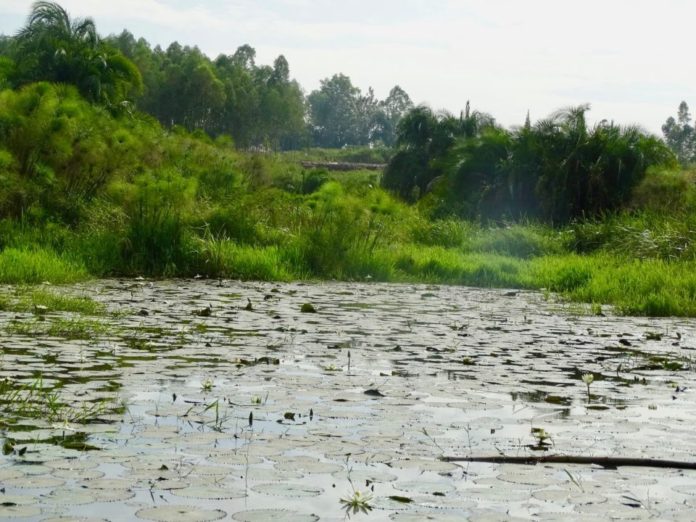By Okong’o Oduya
50,000 Euros have been set aside to save each of East Africa’s Wetlands bordering Kenya, Uganda, Tanzania and the Democratic Republic of Congo.
Among them is Sio -Siteko swamp which is located along Kenya Uganda border. Other wetlands that will benefit from the funds spread along Sango bay/Minzero Wetland in Uganda Tanzania border and Semilili wetland along Uganda –Democratic Republic of Congo.They will each receive 50,000 Euros from the German Corporation GIZ in a bid to conserve River Nile basin.
The Trans-boundary wetlands will embark on projects to empower people living around the catchment areas. The area supports the livelihoods of over 5 million households.
Sio-Siteko swamp like the other wetlands offers a number of ecological, economic and socio-cultural services to the people. The swamp also plays the role of purifying polluted water from upstream and urban areas, supports agriculture, ecotourism, fishing, and horticulture. The wetland is also important for bird watching, especially for the Gray Crown bird.
The government of Kenya report on wetlands survey of 2010 shows that the Sio Siteko wetland catchment originates from the foothills of Mount Elgon and has a total length and catchment area of about 85 km and 1 338 sq. km. respectively.
Environmentalists and Various stakeholders in Kenya and Uganda came together in Busia to deliberate on the measures need to be taken to save the wetland from further degradation causing a negative impact on the Nile basin.

Wetland International, Nature Uganda, Nile Basin Initiative and other local organizations from the region that deal with conservation of Sio-Siteko met to plan how to help people living around the wetlands to put to good use to the resources found in swamps to better their lives instead of clearing it to pave way for farming.
The Nile Basin Initiative (NBI) is an intergovernmental organization formed by the Nile Basin Countries (NBC’s) to ensure the equitable and sustainable utilization of the diverse resources of the Nile Basin in order to achieve water security and avert conflict. The member states are Burundi, the Democratic Republic of the Congo, Egypt, Ethiopia, Kenya, Rwanda, Sudan, Tanzania, and Uganda while Eritrea is an observer.
Julie Mulongo Managing Director, Wetland International Eastern Africa said as an organization they will be spearheading a number of activities to those living along the Sio- Siteko as soon as the plan they are developing will be ready.
“This management plan we are developing will be used by all the stakeholders during the implementation the Sio Siteko rehabilitation which will involve fish farming, matt weaving, water harvesting, horticulture farming among other activities within the catchment, she said
Mulonga noted that it is unfortunate the first Management plan that was developed in 2009 was not implemented. She said through NBI they have received 50,000 Euros (Ksh5.7M) from the GIZ Germany based organization that will help empower communities along the wetlands both in Kenya and Uganda to find an alternative source of income instead of relying 100% on the swamps for a living.
The Nature Uganda an environmental organization based in Uganda led by the executive director Achilles Byaruhanga says traditional environmental conservation nowadays is hardly exercised causing harm to it and the damage has not just affected the wetland but also the underground water table that has gone deeper for water wells.

Byaruhanga blamed the elite group in the community for failing to take part in environmental conservation especially the wetlands. He says factories and industries being erected along these water catchments have a massive negative impact not only to the wetlands but the entire environment
“Our two presidents Uhuru Kenyatta and his Ugandan counterpart Yoweri Museveni should come up with measures on how properly manage these resources jointly for the benefit of our people; the political goodwill from both presidents will ease our work as stakeholders. The increasing threats to the ecosystem government officials from both Uganda and Kenya need appoint focal technical officers to assist the mission and ensure that their outcomes are incorporated in both local and community development programs,” he explained.
He said the execution of the plan that is being funded by German based organization through NBI will succeed if the governments will be part of the process. He said the communities along the swamps in Kenya and Uganda have met in various locations to deliberate how to save this important catchment in the Lake Victoria basin.
NBI through the project officer wetlands Saddik Lotalaiser noted “The main purpose of forming the NBI was to utilize, conserve and manage the water resources of the Nile basin and make sure that people use the water resources sustainably and that is where the basin collaborated with GIZ from the support of government of Germany to help manage the wetland resources of the transboundary significant in the region, which Sio-Siteko is among the targeted swamps,” said Saddik.
He further noted NBI’s role is to help in mobilizing funds in implementing the projects within the member states.
The Eco green one of the environmental community-based organization in Busia Kenya says there is a need for the community to embrace a culture of planting indigenous trees along these wetlands.
“As a community we must admit that we have damaged this swamp and we must do something to salvage it or else our future generation will have nothing to call a swamp. We have lost a number of animals, birds and vegetation as a result of poor usage of the wetland,” said John Kwoba a member of the Sio Siteko wetland association.
Mr. Kwoba says part of the group members are engaged in making Matts, chairs, pottery among many other things from the resources found in the swamp to make a living and if they get support it will be a plus to them.
In 2015/2016 financial year the County Government of Busia allocated ksh20M towards rehabilitating part the wetland in Matayos Sub County but it was later realized that the money was embezzled and few eucalyptus trees was planted instead.














